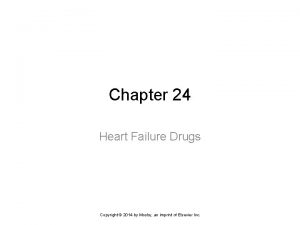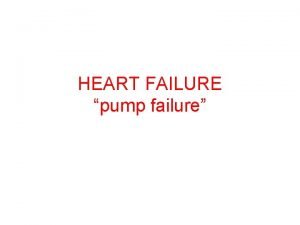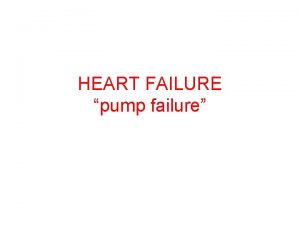CHAPTER 7 FAILURE Failure If a material does










- Slides: 10

CHAPTER 7: FAILURE Failure: If a material does not function properly, then it means that it had failed or went through failure. The usual causes of failure are: 1. Improper materials selection 2. The misuse of the material 3. Improper fabrication of the material Fracture: It is the separation of a material into two or more pieces when a stress is applied to the material. There are two types of fracture: Ductile Fracture and Brittle Fracture.

CHAPTER 7: FAILURE A. Ductile Fracture: Ductile materials usually have a plastic deformation before fracture. Ductile fracture is a very slow process. It does not happen immediately. The crack of a ductile fracture is stable. In ductile fracture, the material absorbs a lot of energy before the fracture. Figure 8. 1 Types of ductile fracture surfaces

CHAPTER 7: FAILURE Figure 8. 1 (a) for extremely soft metals, such as pure gold and lead (kurşun), and polymers and inorganic glasses at high temperatures. These highly ductile materials neck down to a point fracture with 100% area reduction. Figure 8. 1 (b) This is the most common type of fracture for ductile materials.

FAILURE Train wreck at Montparnasse 1895

Ductile Fracture of a specimen strained axially

Schematic representation of the steps in ductile fracture. This fracture has a small neck (boyun). This fracture process occurs in several stages: first the neck forms, then microvoids form, these microvoids enlarge and form a crack which is perpendicular to the applied stress.

B. Brittle Fracture: Brittle materials usually have a very little or no plastic deformation before fracture. Brittle fracture is a very rapid process. The crack propogates immediately. The crack of a brittle fracture is unstable. In brittle fracture, the material absorbs very little energy before the fracture. The crack propogates perpendicular (dikine) to the direction of the applied stress. The brittle fracture surface is very flat. Figure 8. 1 (c) The figure of the brittle fracture.

Ductile to Brittle Transition: Some materials may show ductile to brittle transiton. Ductile to Brittle transition occurs usually with decreasing temperature. When temperature of the materials is decreased, the impact energy drops down from a high value (Ductile behavior) to a low value (Brittle behavior).

Fracture of an Aluminum Crank Arm. Bright: Brittle fracture. Dark: Fatigue fracture.

FATIGUE It is a form of failure that occurs in structures such as in bridges, aircraft, etc. Fatigue is usually caused by dynamic and fluctuating (inip çıkan) stresses. Fatigue can be found in polymers, metals and ceramics. Fatigue occurs after a very long period of repeated stresses on the material.
 Non conducted pac ecg
Non conducted pac ecg Failure to sense
Failure to sense Brittle fracture vs ductile fracture
Brittle fracture vs ductile fracture Virtual condition in gd&t
Virtual condition in gd&t Material yield variance arises due to change in the
Material yield variance arises due to change in the Material culture example
Material culture example Refers to the knowledge language values customs
Refers to the knowledge language values customs Non material culture examples
Non material culture examples Household materials useful harmful
Household materials useful harmful Chapter 24 heart failure drugs
Chapter 24 heart failure drugs Unit 2 materials technology
Unit 2 materials technology



















